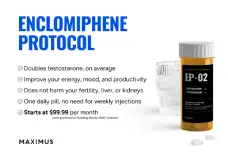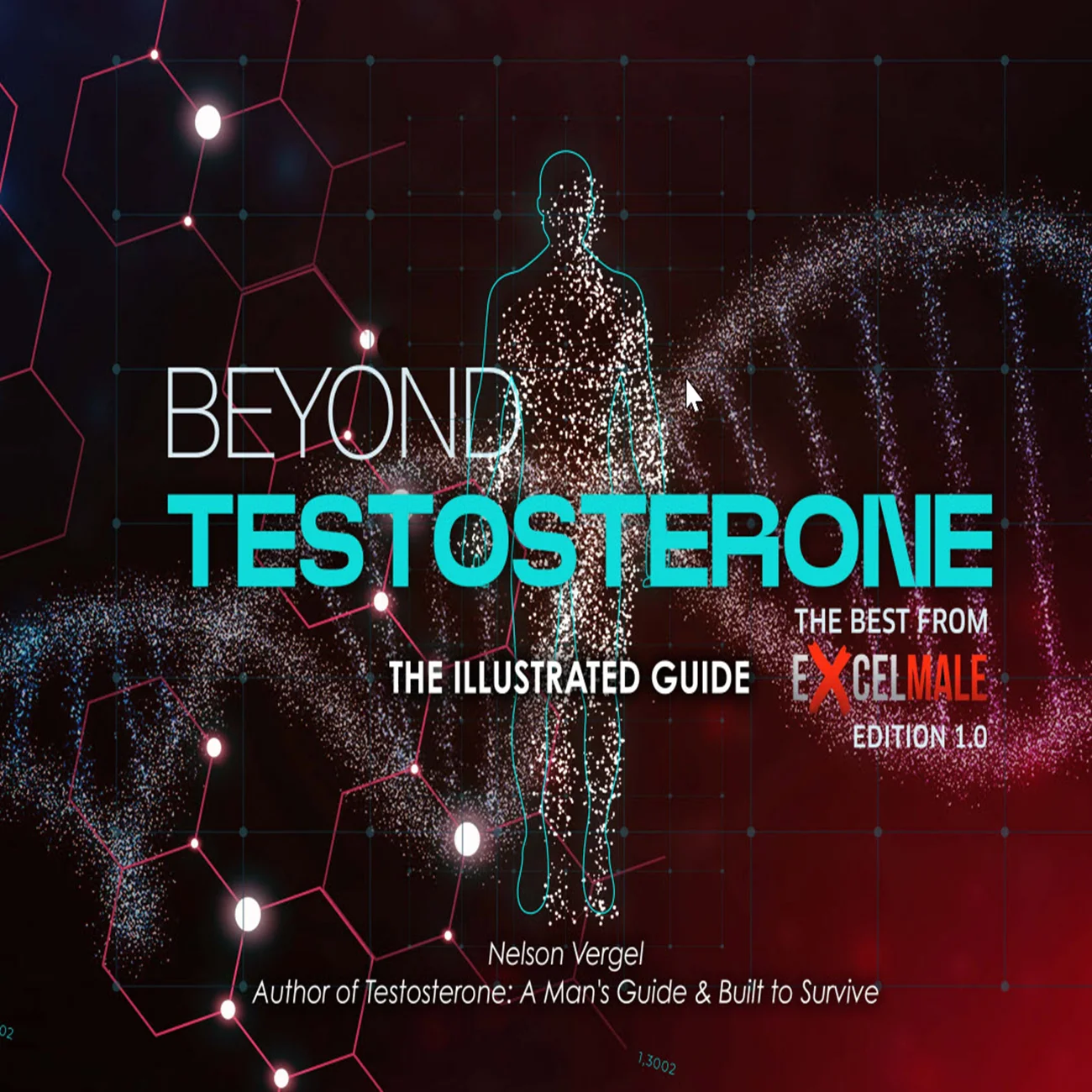You should upgrade or use an alternative browser.
Anyone taking Statins ( Crestor )
- Thread starter broker
- Start date
A cholesterol particle size test is a much better indicator of whether you are likely to suffer from CVD.
Statins and the manipulation of the current cholesterol scale is one of the biggest scams pharmaceutical companies have pulled off.
put them in the bin (garbage) matey. Theyre dogshit, a lie, and one of the biggest cons in history. Theyll do you more harm than not taking them ever will.Any of you guys have LDL issues and need to take a statin such as crestor?
Any side effects? How long have you been on?
Deleted member 16042
Member
-Myopathy/elevated CK
-Muscle wasting
-Weight loss (normal weight 150 dropped to 129)
-Decreased liver function
-Floating pale fatty stools from impaired bile production/impaired ability to digest fats
-Concurrent and subsequently long term gut dysfunction/dysbiosis
-Very possibly contributed to hypogonadism due to cholesterol being pushed so low (All sex hormones are made from Cholesterol)
My cardiologist rolled his eyes when I told him what was going on until he saw the CK results, and then told me to discontinue... I already had three weeks earlier. He had absolutely no idea what to do to help me. I found a functional medicine MD, who did a multifaceted work up, prescribed supplements, specific diet etc which helped marginally. He also found hypogonadism at that time, but I resisted TRT, finally gave in after about a year. He put me on a bad transdermal TRT protocol that made me worse, which is when I found this site (and a couple others), and got things sorted out with Dr Saya. It was quite a ride getting the TRT protocol right, but has been a Godsend in the end. However, My muscles, strength, exercise capability, ability to recover from exercise and endurance have never fully recovered. I discontinued statins after almost a year of use in 2014.
Hundreds of links to NIH and related real studies:
Health Guide: Statin Drugs
-
Vince
Super Moderator
My wife uses crestor. The generic brand, very inexpensive. She has no issues from using it. Her LDL cholesterol is now very good. It also helped her particle count. Her bad particle count did go lower and her good protocol number increased.Any of you guys have LDL issues and need to take a statin such as crestor?
Any side effects? How long have you been on?
xqfq
Active Member
Newer studies (those not paid for by the pharmaceutical companies who make lots of money from statins) suggest high cholesterol does not necessarily lead to CVD and those with high cholesterol are no more likely to die from a heart attack or stroke than those with low cholesterol.
A cholesterol particle size test is a much better indicator of whether you are likely to suffer from CVD.
Statins and the manipulation of the current cholesterol scale is one of the biggest scams pharmaceutical companies have pulled off.
This is complete and utter nonsense. I’ve been researching CVD for 10 years (since my father got sick).
This forum, like many places on the Internet, is extremely biased against statins and in general the idea of fixing your poor blood lipids. Please be careful taking advice here.
1)Can diet alone lower particle number?
2) i also read about taking low dose cestor ( 5 mgs) every other day to reduce potential side effects. I even see studies where people take it once per week.
xqfq
Active Member
My LDL particle number is very high. The overall cholesterol is 199 but LDL is 123. That said, the particle number is extremely high.
1)Can diet alone lower particle number?
2) i also read about taking low dose cestor ( 5 mgs) every other day to reduce potential side effects. I even see studies where people take it once per week.
A bit confused by your numbers here. This is LDL-C if 123? You mention particle number, did you have that measured and what is it? LDL-C is not the particle number. If all you have is the standard lipid panel, non-HDL cholesterol is a good number to look at.
Diet can definitely lower particle number! Reducing saturated fat intake and increasing fiber are two ways I personally accomplished a low LDL-C and particle count. I’ve started taking Ezetimibe (which isn’t a statin) to see if I can reduce it further. But a lot of this is genetic and so that’s why drugs are often needed.
Crestor will lower LDL particle number. I’m not sure about taking it in a cyclical fashion. I suspect if that worked for someone it would be because of the lower average dose or placebo. I have read that creator is usually well tolerated.
Vince
Super Moderator
Its not nonsense. Its the truth. I have a genetic mutation of the 13 gene, giving me abolition of ldl receptor activity on the y chromosome. (HeFh)This is complete and utter nonsense. I’ve been researching CVD for 10 years (since my father got sick).
This forum, like many places on the Internet, is extremely biased against statins and in general the idea of fixing your poor blood lipids. Please be careful taking advice here.
The consequence of this is massively raised LDL-c.
The hypothesis that high LDL is causative towards heart disease was utterly ruined once many individuals with the same familial hypercholesterolemia gene mutation as myself, which causes very high levels of LDL-c were found to have no incidence of CVD, nor evidence of atherosclerosis of any kind under examination.
In short, some people with hypercholesterolemia have heart disease, some dont. Proving that LDL-c isnt, and never was the cause of CVD.
The ‘theory’ or hypothesis that high ldl-c is a marker for CVD is dead in the water. All current evidence points towards clotting, thrombus, endothelial inflammation and intestinal issues.
The majority of cvd patients have ldl-c well within the ‘recommended’ parameters. The same for those dying from myocardial infarctions. (LDL-c within the guideline range)
Statins are actually dangerous from the pov of cvd as they ‘encourage’ the calcium levels within arterial plaque to rise. The idea being that this promotes stability within the lesion.
If anything, they are causative towards angina and other coronary calcification issues such as aortic stenosis and heart valve issues.
The use of statin therapy for cvd is one of the biggest lies in the history of medicine.
xqfq
Active Member
Its not nonsense. Its the truth. I have a genetic mutation of the 13 gene, giving me abolition of ldl receptor activity on the y chromosome. (HeFh)
The consequence of this is massively raised LDL-c.
The hypothesis that high LDL is causative towards heart disease was utterly ruined once many individuals with the same familial hypercholesterolemia gene mutation as myself, which causes very high levels of LDL-c were found to have no incidence of CVD, nor evidence of atherosclerosis of any kind under examination.
In short, some people with hypercholesterolemia have heart disease, some dont. Proving that LDL-c isnt, and never was the cause of CVD.
The ‘theory’ or hypothesis that high ldl-c is a marker for CVD is dead in the water. All current evidence points towards clotting, thrombus, endothelial inflammation and intestinal issues.
The majority of cvd patients have ldl-c well within the ‘recommended’ parameters. The same for those dying from myocardial infarctions. (LDL-c within the guideline range)
Statins are actually dangerous from the pov of cvd as they ‘encourage’ the calcium levels within arterial plaque to rise. The idea being that this promotes stability within the lesion.
If anything, they are causative towards angina and other coronary calcification issues such as aortic stenosis and heart valve issues.
The use of statin therapy for cvd is one of the biggest lies in the history of medicine.
I don’t have the time or energy to debate what is likely one of the most well established facts in modern medicine here.
Having some sort of gene mutation is very rare and not part of the normal cholesterol risk calculus. Some of us naturally and genetically produce too much LDL cholesterol and thats where statins can be very beneficial. Some people can barely diet and have stellar lipid numbers while some can diet like a competitive bodybuilder one month before the Olympia and still have high LDL numbers.
thats because its not a well established fact. Its dogmatic bullshit.I don’t have the time or energy to debate what is likely one of the most well established facts in modern medicine here.
'familial hypercholesterolemia' is THE genetic mutation which creates a higher level of LDL concentration. People with fH have very high levels of LDL-c. Yet, many with fH suffer no CVD at all,..none, nada. Hence the reality that LDL-c levels have nothing to do with CVD.Its a FACT, LDL cholesterol particles sticks to the walls of the arteries causing blockages. That cannot be disputed. This is most certain in those with a high LDL particle number. Throw high tryglycerides into the mix and you are asking for serious trouble if not addressed.
Having some sort of gene mutation is very rare and not part of the normal cholesterol risk calculus. Some of us naturally and genetically produce too much LDL cholesterol and thats where statins can be very beneficial. Some people can barely diet and have stellar lipid numbers while some can diet like a competitive bodybuilder one month before the Olympia and still have high LDL numbers.
LDL-p becomes a different issue , and has a small relevance to CVD, and only when severe oxidation is taking place, (which can be negated through high dose vit e )but still, however, this is almost negligible when put next to TG, systemic inflammation and clotting abnormalities.
LDL is found to be deposited in the thrombus in the lining of the intima in arterial plaque, yet, the percentage by which the LDL is deposited has no bearing on the level of LDL-c or -p circulating. ( The LDL in the plaque deposits dont correlate to high LDL-c or -P)
Hence why heart attacks through infarction is seen with patients with low, medium and high LDL-c and -P numbers
The other problem is that the majority of stain medicines have little or no effect on LDL-p (which is only mildly correlated to cvd), and no effect at all on Lp(a) which is a better risk factor in the relms of lipid issues than LDL-p is.
The actual reason why statins do have a positive effect on CVD is nothing to do with the ldl-c lowering properties (which are pointless), but everything to do with the mechanism by which they promote anti inflammation in the endothelial lining of the coronary artery wall.
Its actually just damn good luck they they (statins) exhibit these properties. Otherwise, theyd be beyond pointless.
The same results for FMD and correction of endothelial dysfunction can be created by using ACE inhibitors and folate.
If youd like any info on this CVD, feel free to pm me, im up to 328 clinical trials read now in the last 13 years involving CVD, plus can put u in touch with the cardiologists who arent 'statin whisperers'
LDL-p has less correlation to CVD than Lp(a) within the confines of cholesterol.Crestor significantly lowers the LDL particle number. Particle number is MOST linked to cvd when it comes to cholesterol. Of course BP and tryglycerides as well.
However 1 study showed that wearing a red tshirt had an even higher correlation to CVD than either LDL-p, or Lp(a).
Placing the majority of the focus on LDL-c, LDL-p and lipid management in general in terms of CVD is foolhardy at best. Other factors outway Lipid metabolism by percentages that exceed the 1000's. One excellent cardiologist and human biology phd compared it to focusing on a splinter in your finger whilst your arm was hanging off!
The single greatest factor in terms of CVD, is diabetes mellitus.
Dr Joseph Kraft famously quoted as saying that every single autopsy report he witnessed on a CVD death, had diabetes mellitus present.
Deleted member 16042
Member
However, there is still nothing beyond statistical association between chlolesterol and plaque. There is no mechanistic smoking gun without other contributory factors like inflammation, glucose/insulin metabolism, higher levels of clotting factors, stress etc etc.
Cholesterol needs a way into the endothelium in the first place.
Statins statistically show about a 1.1% comparative improvement in prevention. Lipitor's own clinical trial information shows this in the ASCOT study:
Lipitor - FDA prescribing information, side effects and uses
"with a relative risk reduction of 36% [(based on incidences of 1.9% for Lipitor vs. 3.0% for placebo)"
So the advertising/marketing to the public and providers is based on the "relative risk reduction" figure. My own doctor quoted this to me when I was put on the drug.
However, this number is pure mathematical trickery when you compare actual numbers of patients per hundred: 1.1%
And as a result, statistically, this also means you need to treat around 100 people to derive any statistical benefit to 1.1 persons. In the meantime, there is much higher well documented incidence of "side effects". One of the highest incidence in those treated, and related to heart disease, a high correlation of statins contributing to insulin resistance.
It's a mess, and blanket reliance on drug industry self reporting is not representative of reality.
This is complete and utter nonsense. I’ve been researching CVD for 10 years (since my father got sick).
This forum, like many places on the Internet, is extremely biased against statins and in general the idea of fixing your poor blood lipids. Please be careful taking advice here.
Dry your eyes princess. Statins cause much more harm than they do good, though big pharma companies would have you believe otherwise. Most people on statins would do well to eat cleanly and do some fitness every now and then instead of looking for the easy option of swallowing a pill.
I think bad carbs are the true culprit as well as trans fats.
I am NOT recommending this but if you eat very well and excercize most of the time but will eat poorly on lets say Thanksgiving, taking a statin the day before and day after will negate the negative affects. It is only beneficial for those that normally eat very well and excercise. Taking crestor and eating poorly will not really help that much if at all. This would work lets say once per month.
Crestor has a long half life and thats why i mentioned it here.
Also, taking crestor with food, even though the label says it can be taken without, will minimize side effects based in a recent Canadian study. Also taking every other day for those that need it.
hCG Mixing Calculator
HCG Mixing Protocol Calculator
Similar threads
- Replies
- 13
- Views
- 5K
- Replies
- 34
- Views
- 1K
- Replies
- 37
- Views
- 7K
TRT Hormone Predictor
Predict estradiol, DHT, and free testosterone levels based on total testosterone
⚠️ Medical Disclaimer
This tool provides predictions based on statistical models and should NOT replace professional medical advice. Always consult with your healthcare provider before making any changes to your TRT protocol.
ℹ️ Input Parameters
Predicted Hormone Levels
Enter your total testosterone value to see predictions
Results will appear here after calculation
Understanding Your Hormones
Estradiol (E2)
A form of estrogen produced from testosterone. Important for bone health, mood, and libido. Too high can cause side effects; too low can affect well-being.
DHT
Dihydrotestosterone is a potent androgen derived from testosterone. Affects hair growth, prostate health, and masculinization effects.
Free Testosterone
The biologically active form of testosterone not bound to proteins. Directly available for cellular uptake and biological effects.
Scientific Reference
Lakshman KM, Kaplan B, Travison TG, Basaria S, Knapp PE, Singh AB, LaValley MP, Mazer NA, Bhasin S. The effects of injected testosterone dose and age on the conversion of testosterone to estradiol and dihydrotestosterone in young and older men. J Clin Endocrinol Metab. 2010 Aug;95(8):3955-64.
DOI: 10.1210/jc.2010-0102 | PMID: 20534765 | PMCID: PMC2913038
Online statistics
- Members online
- 4
- Guests online
- 184
- Total visitors
- 188












